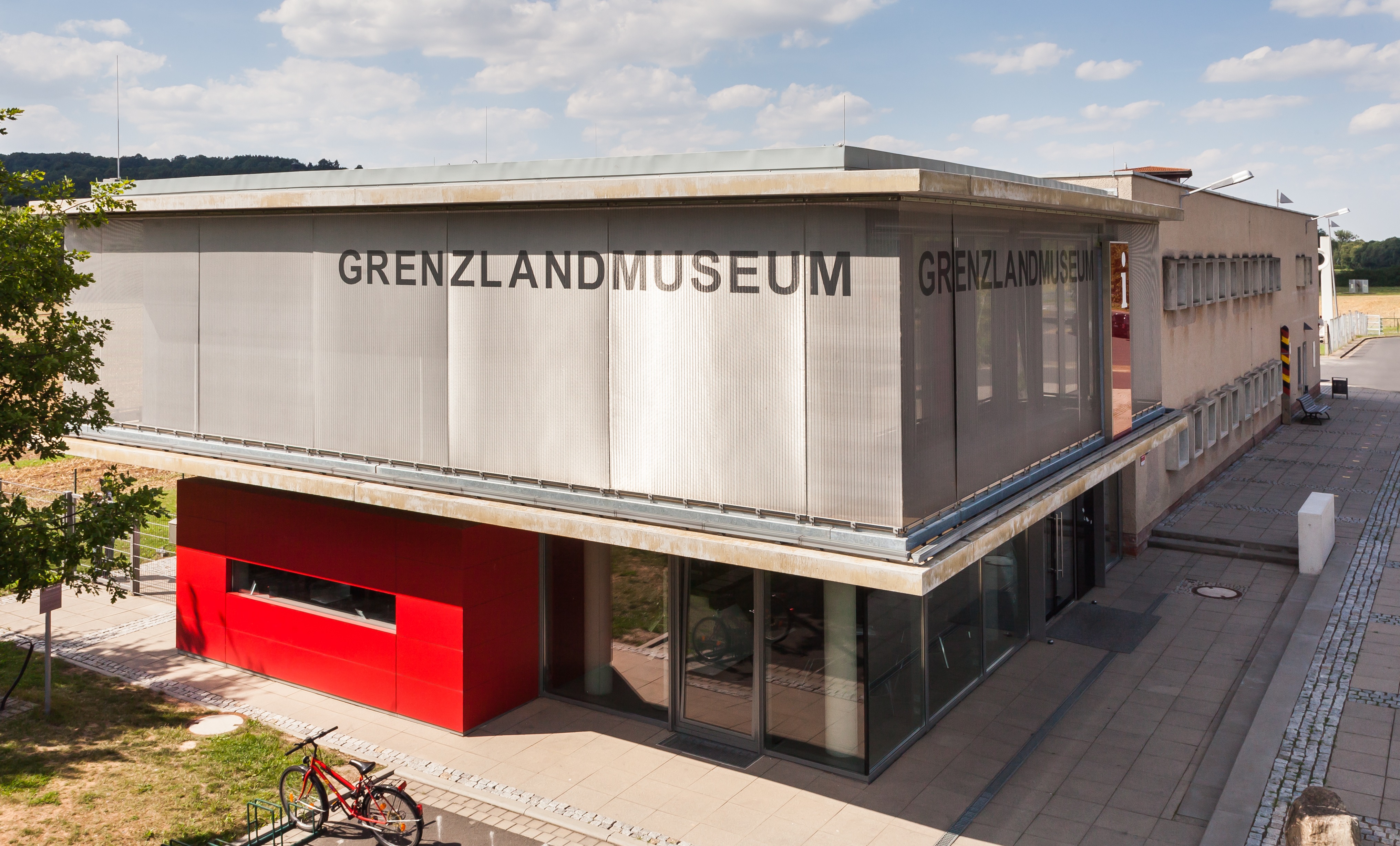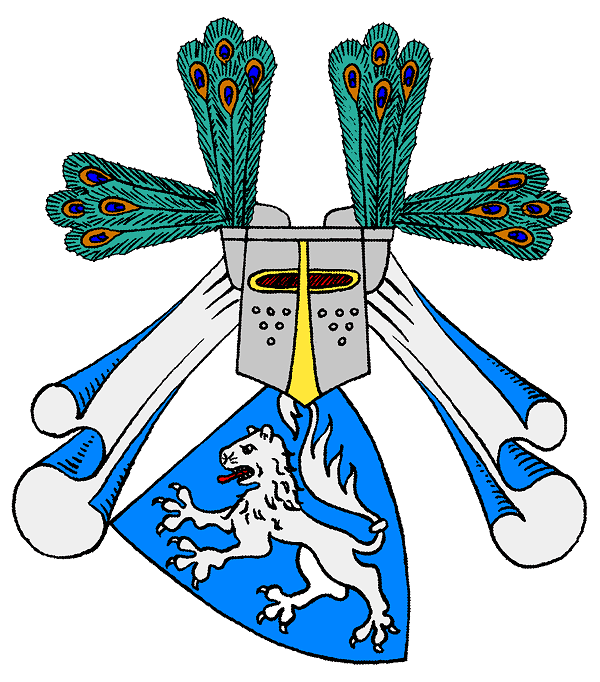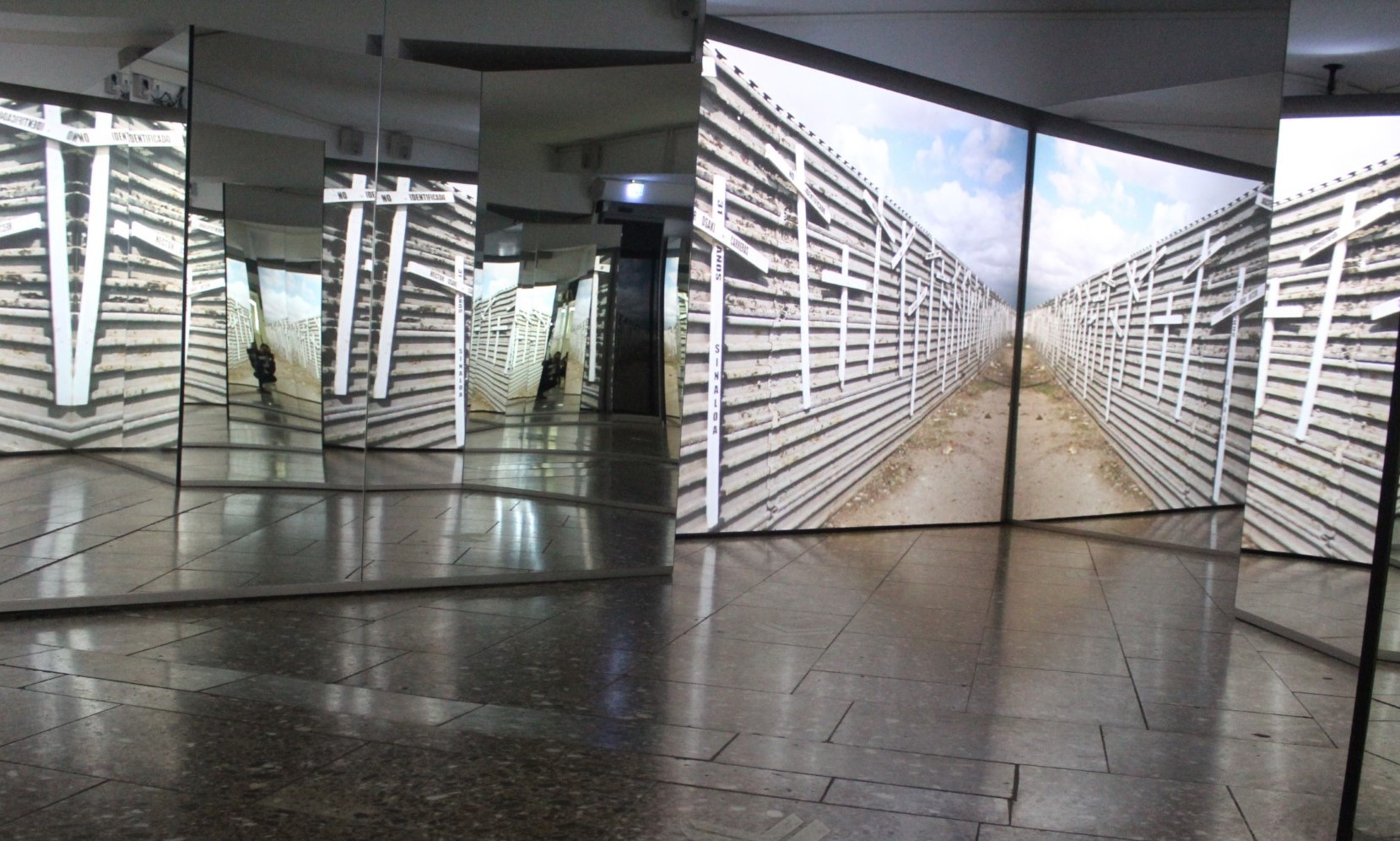|
Böseckendorf
Böseckendorf () is a village in the Teistungen municipality in the district of Eichsfeld in Germany. It became famous during the Cold War for two mass escapes in 1961 and 1963 involving a total of 65 inhabitants – a quarter of the village's population – across the heavily fortified inner German border. The village is first recorded in a deed of about 1250 of Count Ulrich von Regenstein for the monastery of Kloster Beuren. The entire village became a monastic settlement in 1431, after which the villagers were required to pay tithes to support the monastery. Its monastic ties were abolished in 1809. After the end of the Second World War the village found itself just inside the Soviet occupation zone, which became the German Democratic Republic (East Germany) in 1949. The village is situated in a salient of the German Thuringia, surrounded on three sides by the border with Lower Saxony. In 1952 the inner German border was fortified by the East German government, with access to ... [...More Info...] [...Related Items...] OR: [Wikipedia] [Google] [Baidu] |
Operation Vermin
Operation Vermin (''Aktion Ungeziefer'') and Operation Consolidation (''Betriebskonsolidierung'', its Stasi codename), also called Operation Cornflower (''Aktion Kornblume'') were two large-scale operations by the government of East Germany (the German Democratic Republic, GDR) meant to remove "politically unreliable" people from the exclusion zone along the Inner German border. The first operation was executed in June 1952 as “Operation Vermin”, the second one in October 1961 as “Operation Consolidation” and “Operation Cornflower”. Operation Vermin “Operation Vermin” was a forced resettlement operation planned by the Thuringian section of the GDR Ministry of State Security (Stasi) and carried out by the national police force (Volkspolizei). During this operation, between May and June 1952, citizens the government described as “smugglers, money launderers and reactionaries“ and their families were forcibly resettled from the Inner German border to the country� ... [...More Info...] [...Related Items...] OR: [Wikipedia] [Google] [Baidu] |
Inner German Border
The inner German border ( or ''deutsch–deutsche Grenze''; initially also , zonal boundary) was the frontier between the East Germany, German Democratic Republic (GDR, East Germany) and the West Germany, Federal Republic of Germany (FRG, West Germany) from 1949 to 1990. ''De jure'' not including the similar but physically separate Berlin Wall, the border was an irregular L-shaped line, long. It ran south from the Baltic Sea and then east to the border of Protection of Czechoslovak borders during the Cold War, Czechoslovakia. It was formally established by the Potsdam Agreement on 1 August 1945 as the boundary between the Allied-occupied Germany, Western and Soviet occupation zones of Germany. On the Eastern side, it was made one of the world's most heavily fortified frontiers, defined by a continuous line of high metal fences and walls, barbed wire, alarms, anti-vehicle ditches, watchtowers, automatic booby traps and minefields. It was patrolled by 50,000 armed GDR borde ... [...More Info...] [...Related Items...] OR: [Wikipedia] [Google] [Baidu] |
Teistungen
Teistungen is a municipality in the district of Eichsfeld in Thuringia, Germany. Teistungen was first mentioned in 1090 as the site of Teistungenburg monastery, a filiation of Beuren monastery. The old monastery buildings were demolished in 1975. It is located in the historical Eichsfeld, formerly a remote exclave of the Electorate of Mainz in Central Germany. In 1283 the fief was acquired by the knightly family ''von Hagen'' who resided in nearby ''Westernhagen Castle'' at Berlingerode (destroyed in 1525). The Westernhagen family built two tower houses here that were later replaced by manor houses. Between 1802 and 1807 the Eichsfeld became part of the Kingdom of Westphalia, then until 1945 of the Prussian Province of Saxony, thereafter it formed part of East Germany. Since 1990 it is part of the state of Thuringia. Museums Teistungen is the location of the Borderland Museum Eichsfeld, a history museum dealing with the inner-German border and the German division. The indo ... [...More Info...] [...Related Items...] OR: [Wikipedia] [Google] [Baidu] |
Lower Saxony
Lower Saxony is a States of Germany, German state (') in Northern Germany, northwestern Germany. It is the second-largest state by land area, with , and fourth-largest in population (8 million in 2021) among the 16 ' of the Germany, Federal Republic of Germany. In rural areas, Northern Low Saxon and Saterland Frisian language, Saterland Frisian are still spoken, though by declining numbers of people. Lower Saxony borders on (from north and clockwise) the North Sea, the states of Schleswig-Holstein, Hamburg, , Brandenburg, Saxony-Anhalt, Thuringia, Hesse and North Rhine-Westphalia, and the Netherlands. Furthermore, the Bremen (state), state of Bremen forms two enclaves within Lower Saxony, one being the city of Bremen, the other its seaport, Bremerhaven (which is a semi-exclave, as it has a coastline). Lower Saxony thus borders more neighbours than any other single '. The state's largest cities are the state capital Hanover, Braunschweig (Brunswick), Oldenburg (city), Oldenburg, ... [...More Info...] [...Related Items...] OR: [Wikipedia] [Google] [Baidu] |
Borderland Museum Eichsfeld
The Borderland Museum Eichsfeld is a history museum located in Central Germany at the former Inner German border, inner-German border between East Germany, East and West Germany. It deals with the Cold War in general and the German division in specific. The museum exhibitions are situated in a complex of buildings at a former border crossing point near Göttingen and Kassel in the Eichsfeld region. The museum area also includes a circular hiking trail. It leads along the former Iron Curtain, which was transformed into the European Green Belt after the Cold War had ended. Historical development After the end of World War II, defeated Germany was divided into four occupation zones. The Eichsfeld region and many families who lived here were separated by the Allied-occupied Germany#British Zone of Occupation, British and the Allied-occupied Germany#Soviet Zone, Soviet zone, and from 1949 onwards by the two German states. As early as the 1950s and '60s, the Eichsfeld region was t ... [...More Info...] [...Related Items...] OR: [Wikipedia] [Google] [Baidu] |
130805 Grenzland 61 - Kopie
Thirteen or 13 may refer to: * 13 (number) * Any of the years 13 BC, AD 13, 1913, or 2013 Music Albums * ''13'' (Black Sabbath album), 2013 * ''13'' (Blur album), 1999 * ''13'' (Borgeous album), 2016 * ''13'' (Brian Setzer album), 2006 * ''13'' (Die Ärzte album), 1998 * ''13'' (The Doors album), 1970 * ''13'' (Havoc album), 2013 * ''13'' (HLAH album), 1993 * ''13'' (Indochine album), 2017 * ''13'' (Marta Savić album), 2011 * ''13'' (Norman Westberg album), 2015 * ''13'' (Ozark Mountain Daredevils album), 1997 * ''13'' (Six Feet Under album), 2005 * ''13'' (Suicidal Tendencies album), 2013 * ''13'' (Solace album), 2003 * ''13'' (Second Coming album), 2003 * 13 (Timati album), 2013 * ''13'' (Ces Cru EP), 2012 * ''13'' (Denzel Curry EP), 2017 * ''Thirteen'' (CJ & The Satellites album), 2007 * ''Thirteen'' (Emmylou Harris album), 1986 * ''Thirteen'' (Harem Scarem album), 2014 * ''Thirteen'' (James Reyne album), 2012 * ''Thirteen'' (Megadeth album), 2011 * ' ... [...More Info...] [...Related Items...] OR: [Wikipedia] [Google] [Baidu] |
Stasi
The Ministry for State Security (, ; abbreviated MfS), commonly known as the (, an abbreviation of ), was the Intelligence agency, state security service and secret police of East Germany from 1950 to 1990. It was one of the most repressive police organisations in the world, infiltrating almost every aspect of life in East Germany, using torture, intimidation and a vast network of informants to crush dissent. The function of the Stasi in East Germany (the GDR) resembled that of the KGB in the Soviet Union, in that it served to maintain state authority and the position of the ruling party, in this case the Socialist Unity Party of Germany (SED). This was accomplished primarily through the use of a network of civilian informants (called Unofficial collaborator, unofficial collaborators) who contributed to the arrest of approximately 250,000 people in East Germany. It also had a large elite paramilitary force, the Felix Dzerzhinsky Guards Regiment, that served as its armed wing. ... [...More Info...] [...Related Items...] OR: [Wikipedia] [Google] [Baidu] |
Collectivization
Collective farming and communal farming are various types of "agricultural production in which multiple farmers run their holdings as a joint enterprise". There are two broad types of communal farms: agricultural cooperatives, in which member-owners jointly engage in farming activities as a collective; and state farms, which are owned and directly run by a centralized government. The process by which farmland is aggregated is called collectivization. In some countries (including the Soviet Union, the Eastern Bloc countries, China and Vietnam), there have been both state-run and cooperative-run variants. For example, the Soviet Union had both kolkhozy (cooperative-run farms) and sovkhozy (state-run farms). Pre-20th century history Case studies Mexico Under the Aztec Empire, central Mexico was divided into small territories called '' calpulli'', which were units of local administration concerned with farming as well as education and religion. A calpulli consisted of a ... [...More Info...] [...Related Items...] OR: [Wikipedia] [Google] [Baidu] |
Salients, Re-entrants And Pockets
A salient, also known as a bulge, is a battlefield feature that projects into enemy territory. The salient is surrounded by the enemy on multiple sides, making the troops occupying the salient vulnerable. The opponent's front line that borders a salient is referred to as a re-entrant – that is, an angle pointing inwards. A deep salient is vulnerable to being "pinched off" through the base, and this will result in a pocket in which the forces in the salient become isolated and without a supply line. On the other hand, a breakout of the forces within the salient through its tip can threaten the rear areas of the opposing forces outside it, leaving them open to an attack from behind. Implementation Salients can be formed in a number of ways. An attacker can produce a salient in the defender's line by either intentionally making a pincer movement around the military flanks of a strongpoint, which becomes the tip of the salient, or by making a broad, frontal attack which is held u ... [...More Info...] [...Related Items...] OR: [Wikipedia] [Google] [Baidu] |
Thuringia
Thuringia (; officially the Free State of Thuringia, ) is one of Germany, Germany's 16 States of Germany, states. With 2.1 million people, it is 12th-largest by population, and with 16,171 square kilometers, it is 11th-largest in area. Erfurt is the capital and largest city. Other cities include Jena, Gera and Weimar. Thuringia is bordered by Bavaria, Hesse, Lower Saxony, Saxony, and Saxony-Anhalt. It has been known as "the green heart of Germany" () from the late 19th century due to its broad, dense forest. Most of Thuringia is in the Saale drainage basin, a bank (geography), left-bank tributary of the Elbe. Thuringia is home to the Rennsteig, Germany's best-known hiking, hiking trail. Its winter resort of Oberhof, Germany, Oberhof makes it a well-equipped winter sports destination – half of Germany's 136 Winter Olympics, Winter Olympic gold medals had been won by Thuringian athletes as of 2014. Thuringia was favoured by or was the birthplace of three key intellectu ... [...More Info...] [...Related Items...] OR: [Wikipedia] [Google] [Baidu] |
Eichsfeld
The Eichsfeld ( or ; 'Oak-field') is a historical region in the southeast of the state of Lower Saxony (which is called , 'lower Eichsfeld') and northwest of the state of Thuringia (, 'upper Eichsfeld') in the south of the Harz mountains in Germany. Until 1803 the Eichsfeld was for centuries part of the Archbishopric of Mainz, which is the cause of its current position as a Catholic enclave in the predominantly Protestant north of Germany. Following German partition in 1945, the West German portion became Landkreis Duderstadt. A few small transfers of territory between the American and Soviet zones of occupation took place in accordance with the Wanfried Agreement. Geography Today the greatest part of the Obereichsfeld makes up the Landkreis (district) Eichsfeld. Other parts belong to the district Unstrut-Hainich-Kreis. The Untereichsfeld, later Landkreis Duderstadt, was merged mostly with the Landkreis of Göttingen, while Lindau became part of Katlenburg-Lindau which is now ... [...More Info...] [...Related Items...] OR: [Wikipedia] [Google] [Baidu] |







